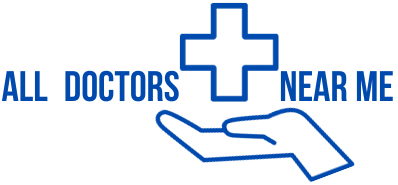Many people wonder if they can have both Medi-Cal and private health insurance. The answer is yes; it is possible to have both Medi-Cal and private insurance at the same time. This is sometimes called “dual coverage.” However, there are specific rules and guidelines for how the two types of insurance work together. The way in which the costs are split also depends on several factors. Below, we discuss how having both Medi-Cal and private insurance can benefit you, and what you need to know about managing both types of insurance.
How Medi-Cal and Private Insurance Work Together
When someone has both Medi-Cal and private health insurance, Medi-Cal acts as a supplemental insurance. This means that it covers the costs that are not fully covered by the private insurance. The private insurance is considered the primary payer, while Medi-Cal is the secondary payer. This plan is designed to reduce an individual’s out-of-pocket costs by helping to cover expenses that are not fully covered by private insurance.
For example, when you receive medical care, your private insurer will first pay its share of the cost. After your private insurer processes the claim, Medi-Cal may pay the remaining amount, such as a co-pay, deductible, or co-insurance, depending on the type of service and your specific Medi-Cal plan. This secondary coverage can significantly reduce your out-of-pocket costs.
Qualifying for Medi-Cal and Private Insurance
To qualify for both Medi-Cal and private insurance, you must first meet Medi-Cal’s eligibility criteria. These generally include requirements for low income, California residency, and U.S. citizenship or legal immigration status. Many people who qualify for Medi-Cal also have private insurance through their employer, their spouse’s employer, or the Health Insurance Marketplace (Covered California).
If you qualify for Medi-Cal, you can enroll in the program even if you already have private insurance. However, it is important that you report your private insurance coverage to Medi-Cal because this affects the coordination of benefits between the two programs.
Managing Dual Insurance Costs
Having both Medi-Cal and private insurance can be a huge financial burden. Medi-Cal can help pay for expenses that private insurance can’t cover. However, there are some important things to keep in mind when managing dual insurance. Medi-Cal and your private insurance plan must coordinate benefits to avoid overlap or double coverage. Typically, Medi-Cal requires you to bill your private insurance first. The rest of the costs are covered by Medi-Cal. Failure to coordinate these benefits can result in delays in your claim payment or confusion about which plan should cover a particular expense.
If you have private insurance, you may still have to pay monthly premiums for your health insurance. Medi-Cal can help pay premiums for Medicare beneficiaries. In some cases, Medi-Cal can also pay premiums for employer-provided health insurance, if you qualify. Check with Medi-Cal to see what premiums are covered and whether you will have to continue paying premiums for private insurance.
Having both Medi-Cal and private insurance can serve as a safety net, as it covers additional costs that private insurance does not. This is especially helpful for people with chronic conditions, ongoing medical needs, or high medical bills, as it can ease their financial burden.
Types of Private Insurance That Work with Medi-Cal
There are several types of private insurance that can work with Medi-Cal. The interaction between the two can vary by situation. If you have health insurance through your employer, you may still be eligible for Medi-Cal if your income falls within the eligibility limits. Your employer’s insurance is the primary insurer, and Medi-Cal covers the costs not paid by your employer’s plan.
If you purchase insurance through the Health Insurance Marketplace (Covered California) and your income falls within the plan’s limits, you may be eligible for Medi-Cal. In this case, your Marketplace plan is the primary insurance and Medi-Cal is the sec
Neither plan should be used unless there is a medical necessity. In addition, certain specialized treatments or services may require prior authorization or may have a limit on the number of covered visits, either through Medi-Cal or through private insurance.
It is important to review the terms of your Medi-Cal plan and private insurance plan to understand what services are covered and whether any exclusions or limitations apply.
Disclose Private Insurance to Medi-Cal
If you have private insurance, you must disclose this to Medi-Cal during the application process. Failure to disclose your private insurance coverage may result in a delay in your Medi-Cal eligibility or benefits. Additionally, if Medi-Cal is not aware of your private insurance, benefits may not be coordinated properly. This could result in higher co-payments or unpaid claims. Be sure to notify Medi-Cal of any changes to your private insurance coverage, such as if you change jobs or health insurance.
In conclusion, it is possible to have both Medi-Cal and private insurance. This can have significant financial benefits because it can help pay for expenses that are not covered by other plans. Typically, when you have dual insurance, your private insurance is the primary payer and Medi-Cal acts as a secondary insurance that covers the remaining costs, such as co-pays and deductibles. While there are some complexities to sort out, such as coordinating benefits and providing your insurance information to Medi-Cal, dual coverage can help ensure that you are getting comprehensive health care at the lowest possible out-of-pocket cost. Always review your coverage options and make sure that Medi-Cal and private insurance can work effectively together to meet your health care needs.
